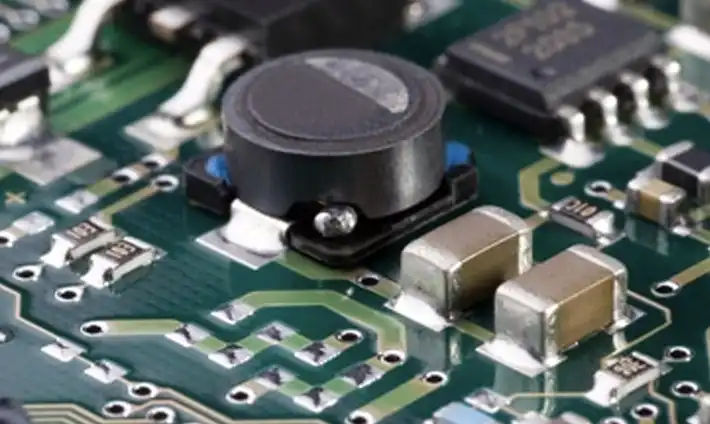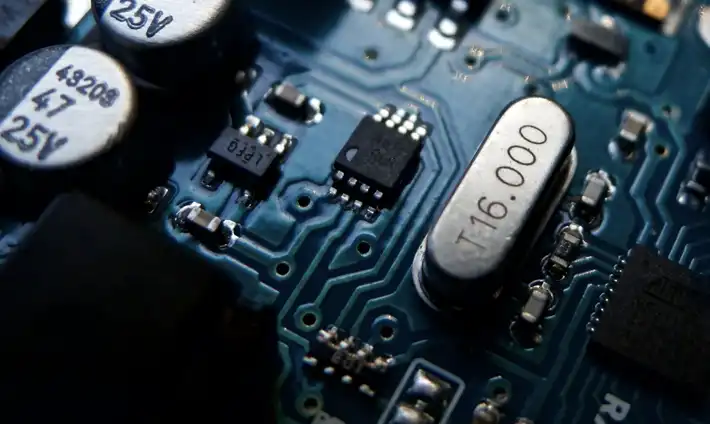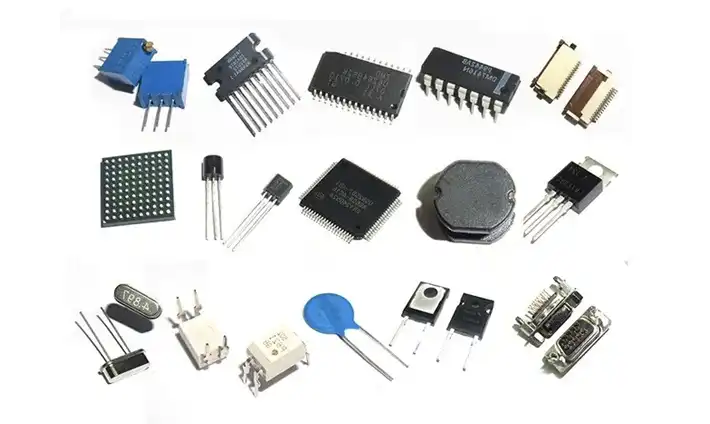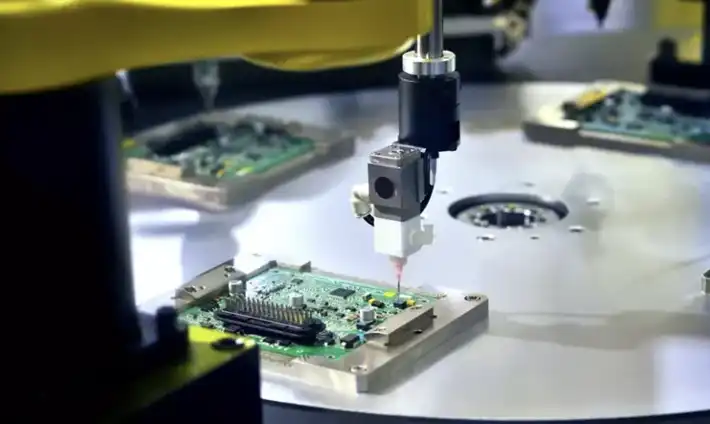In today’s fast-paced technological landscape, choosing the right electronic components is crucial for the success of any project. From resistors and capacitors to microcontrollers and sensors, each component plays a unique role in the functionality and performance of electronic devices.
However, with a plethora of options available in the market, selecting the most suitable components can be overwhelming.
This comprehensive guide aims to simplify the process by providing valuable insights and expert tips on how to choose electronic components effectively.
Understand Your Requirements

Before diving into the process of selecting electronic components, it’s crucial to have a clear understanding of your project’s requirements. Whether you’re working on a hobbyist project or a professional endeavor, defining your needs and specifications upfront can streamline the selection process and ensure the success of your project.
Identify Project Goals and Objectives
Start by outlining the goals and objectives of your project. What purpose will the electronic components serve? Are you building a prototype, a consumer product, or an industrial application? Understanding the overarching goals of your project will help you determine the specific requirements for the electronic components you need.
Define Technical Specifications
Once you’ve established your project goals, it’s time to define the technical specifications required for your electronic components. Consider factors such as voltage, current, frequency, and signal integrity. Will your project operate on a specific voltage range? What frequency response is needed for optimal performance? Defining these technical specifications will narrow down your options and guide your component selection process.
Consider Environmental Factors
Take into account the environmental conditions in which your project will operate. Will it be exposed to high temperatures, humidity, or vibration? Certain electronic components may have temperature or moisture sensitivity, so it’s essential to choose components that can withstand the environmental conditions of your application.
Evaluate Budget and Timeline
Budget and timeline constraints are also critical factors to consider when choosing electronic components. Determine your budget allocation for components and balance it with the quality and reliability requirements of your project. Additionally, consider the timeline for procurement, testing, and integration of components into your project.
Assess Compatibility and Integration
Compatibility with existing systems or components is another consideration when choosing electronic components. Ensure that the components you select are compatible with other hardware and software elements of your project. Consider factors such as communication protocols, interface standards, and form factor compatibility to facilitate seamless integration.
Seek Expert Advice if Needed
If you’re unsure about the specific requirements for your project or need guidance on choosing electronic components, don’t hesitate to seek expert advice. Consult with experienced engineers, technicians, or online communities specializing in electronics and component selection. Their insights and recommendations can help you make informed decisions aligned with your project goals.
By thoroughly understanding your project requirements before choosing electronic components, you can streamline the selection process, minimize risks, and ensure the successful implementation of your project.
Research Available Electronic Components

When embarking on a project that requires electronic components, it’s essential to conduct thorough research to explore the wide array of options available in the market. By researching available components, you can identify the best-suited components for your specific project requirements and ensure optimal performance and functionality. Here’s a step-by-step guide to help you effectively research available electronic components:
1. Identify Component Categories:
Begin by identifying the categories of electronic components relevant to your project. Common categories include resistors, capacitors, inductors, diodes, transistors, integrated circuits (ICs), sensors, connectors, and more. Understanding the different types of components will help you narrow down your search and focus on the most relevant options.
2. Explore Supplier Websites:
Visit websites of reputable electronic component suppliers and distributors to explore their product catalogs. Many suppliers offer comprehensive online catalogs with detailed specifications, datasheets, and pricing information for each component. Take advantage of search filters and categories to streamline your search and find components that meet your requirements.
3. Utilize Electronic Component Databases:
Explore electronic component databases and search engines that provide extensive databases of available components from various manufacturers and suppliers. These databases often allow you to filter components based on parameters such as voltage rating, current rating, package type, and more, making it easier to find suitable options for your project.
4. Read Technical Documentation:
Review technical documentation, datasheets, and application notes provided by component manufacturers. These documents contain valuable information about the performance characteristics, operating conditions, and application guidelines for each component. Pay attention to specifications such as voltage tolerance, temperature range, and frequency response to ensure compatibility with your project requirements.
5. Compare Features and Specifications:
Compare the features and specifications of different components to determine which ones best meet your project requirements. Pay attention to factors such as voltage and current ratings, tolerance, temperature coefficient, frequency response, and package size. Consider trade-offs between performance, cost, and availability when making comparisons.
6. Check Availability and Lead Times:
Verify the availability and lead times of the components you’re interested in before making a final decision. Some components may have long lead times or limited availability, which could impact your project timeline. Consider alternative options or suppliers if necessary to ensure timely procurement of components.
7. Seek Recommendations and Reviews:
Reach out to colleagues, peers, or online communities for recommendations and reviews of electronic components. Ask for feedback on component reliability, performance, and compatibility based on their firsthand experiences. Online forums, discussion boards, and social media groups can be valuable resources for gathering insights and recommendations.
8. Consider Future Compatibility and Upgradability:
When selecting components, consider their compatibility with future technologies and upgrades. Opt for components that offer scalability and compatibility with evolving standards and requirements. Avoid components that may become obsolete or difficult to source in the future, ensuring long-term viability and sustainability of your project.
Compare Electronic Components

When it comes to selecting electronic components for your project, comparing different types of electronic components is essential to ensure you choose the most suitable components that meet your requirements in terms of performance, quality, and cost-effectiveness.
Here’s a step-by-step guide to help you effectively compare electronic components:
1. Define Comparison Criteria:
Start by defining the criteria you’ll use to compare electronic components. Consider factors such as specifications (e.g., voltage rating, current rating, frequency response), physical attributes (e.g., size, package type), quality and reliability, cost, availability, and compatibility with your project requirements.
2. Research Available Options:
Explore the wide range of electronic components available in the market, including different brands, manufacturers, and specifications. Utilize online catalogs, supplier websites, electronic component databases, and technical documentation to gather information about available options.
3. Create a Comparison Matrix:
Organize your research findings into a comparison matrix or spreadsheet to systematically compare the different electronic components based on your defined criteria. Create columns for each criterion and rows for each component you’re considering. This matrix will help you visualize and evaluate the strengths and weaknesses of each option.
4. Analyze Specifications and Performance:
Review the specifications and performance characteristics of each electronic component to assess how well they align with your project requirements. Pay attention to parameters such as voltage and current ratings, tolerance, temperature range, frequency response, and signal integrity. Compare these specifications across different components to identify the best-suited options.
5. Evaluate Quality and Reliability:
Consider the quality and reliability of each electronic component by reviewing technical documentation, datasheets, and customer reviews. Look for components that meet industry standards and certifications (e.g., RoHS compliance) and have a proven track record of reliability. Assess factors such as MTBF (Mean Time Between Failures) and manufacturer reputation to gauge the overall quality of each component.
6. Assess Cost and Value:
Compare the cost of each electronic component while considering its value proposition in terms of performance, quality, and reliability. Factor in not only the initial purchase price but also the total cost of ownership over the component’s lifecycle, including maintenance, repair, and potential replacements. Choose components that offer the best balance of cost-effectiveness and value for your project.
7. Check Availability and Lead Times:
Verify the availability and lead times of each electronic component to ensure timely procurement and project execution. Consider factors such as stock levels, production capacity, and supplier reliability when assessing availability. Choose components that are readily available from trusted suppliers with reasonable lead times to minimize project risks and delays.
8. Consider Future Compatibility and Upgradability:
Evaluate the potential for future compatibility and upgradability of each electronic component to accommodate evolving project requirements and technologies. Choose components that offer scalability and compatibility with future upgrades or expansions, reducing the need for costly replacements or redesigns down the line.
9. Make Informed Decisions:
Based on your comparison matrix and analysis, make informed decisions about which electronic components to select for your project. Consider all relevant factors, including specifications, performance, quality, reliability, cost, availability, and future compatibility, to choose the components that best meet your requirements and objectives.
By following these steps and systematically comparing electronic components based on defined criteria, you can make informed decisions and choose the most suitable components for your project. Prioritize performance, quality, and cost-effectiveness to ensure the success and sustainability of your electronic endeavors.
Considering Cost and Availability of Electronic Components

When selecting electronic components for your project, it’s crucial to take into account both cost and availability factors to ensure a successful and cost-effective implementation. Balancing the cost of components with their availability can help you make informed decisions while staying within budget and meeting project timelines. Here are some tips to consider when evaluating the cost and availability of electronic components:
1. Define Budget Constraints:
Start by defining a budget for your project, allocating funds specifically for the purchase of electronic components. Consider factors such as project scope, desired quality level, and available resources when setting your budget. Having a clear budget in mind will guide your component selection process and prevent overspending.
2. Compare Pricing from Multiple Suppliers:
Research and compare pricing from multiple suppliers and distributors to find the most cost-effective options for your required components. Keep in mind that pricing may vary significantly between suppliers, so it’s essential to shop around and negotiate for the best deals. Consider factors such as bulk discounts, shipping costs, and payment terms when comparing prices.
3. Consider Total Cost of Ownership:
When evaluating the cost of electronic components, consider the total cost of ownership, which includes not only the initial purchase price but also factors such as maintenance, support, and potential future upgrades or replacements. Choosing high-quality components upfront may incur higher initial costs but can result in long-term cost savings by reducing the risk of failures and replacements.
4. Check Lead Times and Availability:
Verify the lead times and availability of electronic components before making purchasing decisions. Some components may have long lead times or limited availability, which could impact your project timeline and schedule. It’s essential to plan ahead and ensure that components are readily available when needed to avoid delays and disruptions.
5. Evaluate Alternative Options:
If a particular component is prohibitively expensive or unavailable from your preferred supplier, consider exploring alternative options or substitutes that offer similar functionality at a lower cost or with better availability. Be flexible and open to considering different brands, manufacturers, or specifications to meet your project requirements while staying within budget constraints.
6. Consider Lifecycle Costs:
Factor in the lifecycle costs of electronic components, including maintenance, repair, and replacement costs over their expected lifespan. Choosing components with a proven track record of reliability and longevity can help minimize lifecycle costs and ensure the sustainability of your project in the long run.
7. Negotiate with Suppliers:
Don’t hesitate to negotiate pricing and terms with suppliers to secure the best possible deals on electronic components. Many suppliers are willing to offer discounts or special pricing for bulk orders, repeat business, or long-term partnerships. Negotiating favorable terms can help lower costs and improve the overall value proposition for your project.
By carefully considering both cost and availability factors when choosing electronic components, you can make informed decisions that align with your project budget and timeline goals. Prioritize cost-effectiveness and reliability to maximize the value of your investment and ensure the success of your electronic endeavors.
Find A Reliable Electronic Component Manufacturer

Selecting a reliable electronic component manufacturer is crucial for ensuring the quality, performance, and reliability of the components used in your projects.
Here’s a guide to help you find a trustworthy manufacturer:
1. Research Manufacturer Reputation:
Start by researching the reputation and track record of electronic component manufacturers. Look for companies with a proven history of producing high-quality components and serving satisfied customers. Check online reviews, testimonials, and industry forums to gauge the manufacturer’s reputation among professionals and consumers.
2. Verify Industry Certifications:
Verify that the manufacturer holds relevant industry certifications and complies with international standards for electronic components. Look for certifications such as ISO 9001 (Quality Management System), ISO 14001 (Environmental Management System), and RoHS (Restriction of Hazardous Substances) compliance. These certifications demonstrate the manufacturer’s commitment to quality and compliance with industry standards.
3. Evaluate Product Quality:
Evaluate the quality of the electronic components manufactured by the company. Review technical specifications, datasheets, and performance data to assess the reliability, durability, and functionality of the components. Look for components that meet or exceed industry standards and have undergone rigorous testing and validation procedures.
4. Consider Production Capacity and Capabilities:
Consider the production capacity and capabilities of the manufacturer to ensure they can meet your project requirements and volume demands. Inquire about the manufacturer’s production facilities, equipment, and workforce to assess their capacity to produce components efficiently and reliably. Choose a manufacturer with sufficient resources and scalability to accommodate your needs.
5. Assess Supply Chain and Logistics:
Evaluate the manufacturer’s supply chain and logistics capabilities to ensure timely delivery of components to your location. Inquire about the manufacturer’s sourcing of raw materials, production lead times, inventory management practices, and shipping options. Choose a manufacturer with robust supply chain processes and logistics infrastructure to minimize delays and disruptions.
6. Review Customer Support and Service:
Review the level of customer support and service provided by the manufacturer. Consider factors such as responsiveness, technical assistance, warranty policies, and after-sales support. Choose a manufacturer that offers prompt and reliable customer support to address any issues or concerns that may arise during the procurement and usage of electronic components.
7. Seek Recommendations and References:
Seek recommendations and references from industry professionals, colleagues, or peers who have experience working with electronic component manufacturers. Ask for referrals to reputable manufacturers known for their quality products and excellent service. Personal recommendations can provide valuable insights and help you make an informed decision.
8. Request Samples and Conduct Trials:
Request samples of electronic components from the manufacturer and conduct trials to evaluate their performance and suitability for your projects. Test the components under real-world conditions to assess their reliability, compatibility, and functionality. Use the trial period to gauge the manufacturer’s responsiveness and willingness to address any concerns or issues that may arise.
By following these steps and conducting thorough research, you can find a reliable electronic component manufacturer that meets your quality, performance, and reliability requirements. Choose a manufacturer that prioritizes quality, compliance, and customer satisfaction to ensure the success of your projects.
FAQs (Frequently Asked Questions)
How do I determine the compatibility of electronic components for my project?
Determining compatibility involves considering factors such as voltage and current ratings, frequency response, signal integrity, and environmental conditions. Conducting thorough research and consulting with experts can help identify compatible components for your project.
What are some common mistakes to avoid when choosing electronic components?
Common mistakes include neglecting to research project requirements, choosing unreliable suppliers, overlooking quality and reliability considerations, and failing to plan for future expansion and upgradability. Avoiding these pitfalls can help ensure successful component selection.
How can I ensure the quality and reliability of electronic components?
To ensure quality and reliability, prioritize components that meet industry standards and certifications, such as RoHS compliance. Additionally, choose components from reputable manufacturers and suppliers and conduct thorough testing and validation procedures.
What should I do if I encounter issues with electronic components during implementation?
If issues arise, utilize troubleshooting tools and techniques such as oscilloscopes, multimeters, and logic analyzers to diagnose and resolve problems. Additionally, seek guidance from online resources, forums, and communities for troubleshooting assistance.
Are there any resources available for further guidance on choosing electronic components?
Yes, there are numerous online resources, forums, and communities dedicated to electronics and component selection. Networking with professionals in the field and consulting reputable sources can provide valuable guidance and support.
How can I stay updated on the latest developments and trends in electronic components?
To stay updated, follow industry news and publications, participate in online forums and communities, attend conferences and seminars, and subscribe to newsletters and publications from reputable sources.
Conclusion
Choosing electronic components requires careful consideration of various factors, including project requirements, component quality and reliability, supplier credibility, and future expansion possibilities. By following the tips and guidelines outlined in this guide, you can make informed decisions and ensure the success of your electronic projects.